Potential Output: Concepts and Measurement - Department of Labour
Potential Output: Concepts and Measurement - Department of Labour
Potential Output: Concepts and Measurement - Department of Labour
Create successful ePaper yourself
Turn your PDF publications into a flip-book with our unique Google optimized e-Paper software.
Darren Gibbs 93<br />
FIGURE 3: Estimated potential output <strong>and</strong> output gap series—labour input<br />
methods<br />
20<br />
15<br />
10000<br />
<strong>Output</strong> gap (%)<br />
10<br />
5<br />
0<br />
-5<br />
-10<br />
-15<br />
-20<br />
8000<br />
6000<br />
4000<br />
2000<br />
0<br />
1977<br />
1978<br />
1979<br />
1980<br />
1981<br />
1982<br />
1983<br />
1984<br />
1985<br />
1986<br />
1987<br />
1988<br />
1989<br />
1990<br />
1991<br />
1992<br />
1993<br />
<strong>Output</strong> ($m 82/83)<br />
June years<br />
yl1: output gap (left axis)<br />
gdp (right axis)<br />
yl1: output gap (left axis)<br />
yl2: output gap (left axis)<br />
yl1: potential output (right axis)<br />
rate; the real unemployment benefit; the minimum wage rate; <strong>and</strong> the volume <strong>of</strong><br />
world trade. The natural rate <strong>of</strong> unemployment is then obtained by solving out<br />
the equation with the cyclical factors eliminated.<br />
An alternative approach involves the estimation <strong>of</strong> a Phillips curve or twoequation<br />
wage-price model. This model is subsequently solved for an<br />
unemployment rate that is consistent with stable inflation.<br />
It was decided to adopt the Phillips curve approach in this paper. However,<br />
the estimated natural unemployment rate series also displayed unreasonable<br />
volatility. This was removed by passing the series through the Hodrick-Prescott<br />
filter, producing the natural unemployment rate series depicted in Figure 2.<br />
Clearly this methodology is deficient. However, its use was necessitated by<br />
the absence <strong>of</strong> better estimates <strong>of</strong> the natural rate <strong>of</strong> unemployment (which is a<br />
major task in its own right). Although the true natural rate series is likely to be<br />
less smooth, the estimated natural rate <strong>of</strong> 7.75 percent as <strong>of</strong> March 1994 seems<br />
plausible; however recent falls in unemployment (to 6.3 percent in June 1995)<br />
combined with only moderate wage growth suggest that it was likely to have<br />
been lower than this by mid 1995.<br />
The second labour input related potential output series estimate is based<br />
directly on Okun’s model relating the levels <strong>of</strong> output <strong>and</strong> unemployment as



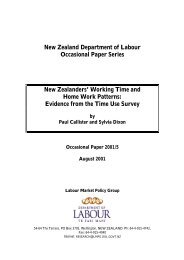

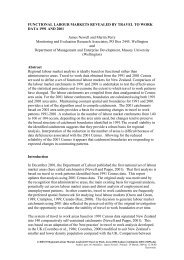

![a note on levels, trends, and some implications [pdf 21 pages, 139KB]](https://img.yumpu.com/27285836/1/184x260/a-note-on-levels-trends-and-some-implications-pdf-21-pages-139kb.jpg?quality=85)


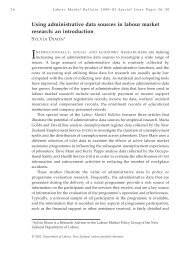
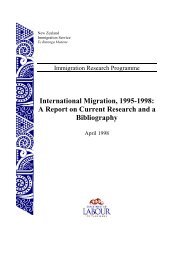
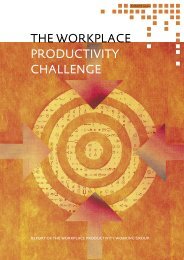
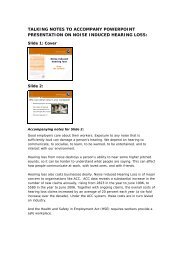
![Labour Market Trends and Outlook - 1996 [pdf 18 pages, 94KB]](https://img.yumpu.com/27285764/1/184x260/labour-market-trends-and-outlook-1996-pdf-18-pages-94kb.jpg?quality=85)

